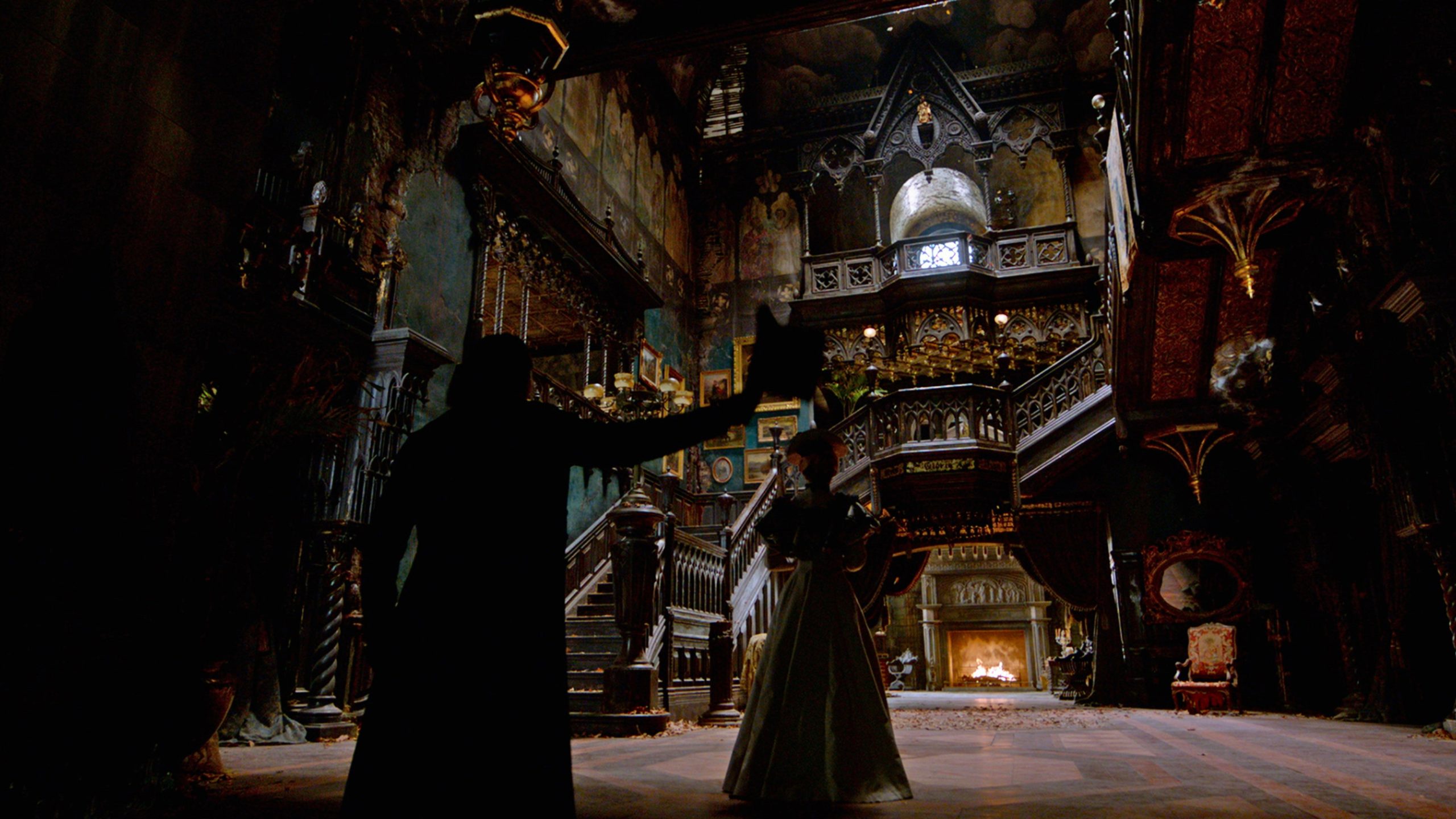Table of Contents Show
The Gothic Romance genre has been in existence in literature since the late 1700s as an offshoot of the genre known as Romanticism. Sometimes, Gothic Romanticism is often conflated with and compared to, Dark Romanticism, which also stems from Romanticism. The genre explores the emotional and psychological realm of human nature, the inherent darkness of the world and the human mind, and the darkness of the past in (meta)physical ways. It still exists today in the film and television formats and in our English classrooms through the old books that were written. The genre provides audiences with something grittier, edgier, and darker than a modern romantic comedy — and than other Romance works of the period.
Defining The Gothic Romance Genre
Gothic Romanticism and Dark Romanticism exist, as aforementioned, under the larger genre known as Romanticism. Defining Romanticism and how it manifested in the literature, poetry, and philosophy of the day is essential to understanding the appeals of Gothic Romance. Gothic Romance stories are not simply romance stories with dark, Gothic elements — they may, and often do, have romance plotlines, but these stories are working more closely with the beliefs of Romanticism, which is why they are known as Romances.
Romanticism
Romanticism is a reactionary philosophy to the rationalism and empiricism of the Enlightenment. It favors emotion over reason, the individual over society, nature over industrialism, and the past over the present. The writers associated with this movement are euphoric and praise emotion, the individual, and nature for their ability to attain true happiness, beauty, and peace. The individual is not shamed for their passions or emotions — rather, they are praised for them. If the individual was an artist, they were all the more important since Romantics found art the only way to improve the quality of society against modernization. This radical shift in attitude about nature and the individual had a profound impact on poetry and literature; authors and poets such as Ralph Waldo Emerson, Walt Whitman, and William Wordsworth were major Romantic writers. Their works emphasized the beauty and value of nature, the individual and frequently dipped into Classical figures from mythology and antiquity in their works.

Gothic And Dark Romanticism
Romanticism’s preoccupation with emotion and the individual made it an ideal genre for exploring the darker side of humanity and the past. This manifested in the genres Dark Romanticism and Gothic Romanticism. Gothic fiction began with the publication of Horace Walpole’s The Castle of Otranto in 1764 and was popularized by the many novels of “the Great Enchantress” Ann Radcliffe in the 1790s. Romanticism’s preoccupation with emotion and the individual made it an ideal genre for exploring the darker side of humanity and the past. This manifested in the genres Dark Romanticism and Gothic Romanticism. Gothic fiction began with the publication of Horace Walpole’s The Castle of Otranto in 1764 and was popularized by the many novels of “the Great Enchantress” Ann Radcliffe in the 1790s. Romanticism finds joy and euphoria in the expression of emotion, the power of the individual, and the beauty of nature. Dark and Gothic Romanticism centralizes high emotional intensity, psychological distress, and generational trauma. The genre exposes the darkness of the human mind, moral greyness, and the constraints of society while emphasizing the power of nature.
Some of Gothic Romanticism’s particular goals and themes are explained in John Ruskin’s treatise Stones of Venice. In it, he writes about the themes of Gothic architecture, but these themes aptly describe the nature of any Gothic text, from a piece of poetry or sculpture to a novel or film. The six themes that make up a Gothic are as follows: savageness / rudeness, changefulness / love of change, naturalism / love of nature, grotesqueness / disturbed imagination, rigidity / obstinacy, and redundancy / abundance; Ruskin also claims that “the withdrawal of any one, or any two, will not at once destroy the Gothic character of a building, but the removal of a majority of them will,” showing the transient nature of the genre as well. (( Ruskin, John. “‘The Nature of Gothic.’” The Stones of Venice, edited by Marius Masi and Juliet Sutherland, II, 1851, pp. 151–230. ))
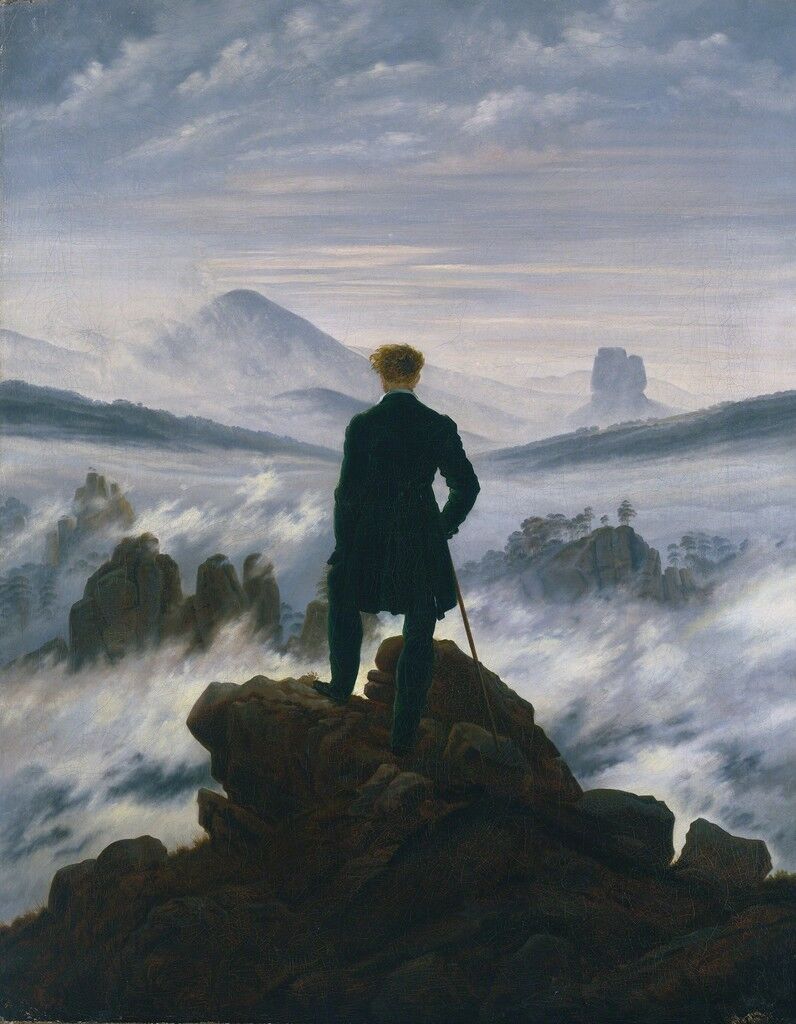
Another key theme of Gothic Romances is known as the “sublime,” which is evoked by the individual’s terror at the unknown. The unknown can manifest in the form of the supernatural or the human mind, but how the individual responds to this unknown is what creates the melodrama of the text, or the sublime. The genre’s fascination with difference, expression, and nature makes it fascinating to read and watch, partially why Gothic Romances have since overshadowed Romanticism as a literary genre.
Common Tropes
Like any other genre, Gothic and Dark Romanticism has its share of tropes. The most recognizable Gothic Romance trope is a sinister setting that pushes characters to emotional and psychological extremes, usually in the form of an ancestral home, an old church or abbey, or an ancient building. The physical building itself can be a character because of its rich, complex, multilayered history. The titular home of Wuthering Heights and Crimson Peak are prime examples of this trope. Frame narratives, or the story within a story, are common in the genre because of how they allow the author to explore the “unknown.”
Frame stories can be in the form of letters like Henry James’ The Turn of the Screw, translated documents like Dracula, a detective’s findings like Gaston Leroux’s The Phantom of the Opera, or simply a conversation between two people like Frankenstein. The supernatural, usually in the form of ghosts or spirits, is also common because of how they represent the sublime and the unknown. Ghosts and spirits also evoke the past, which is one of the key themes of Gothic Romanticism and Romanticism in general. Psychological intensity to the point of madness is also a common trope, which is sometimes conflated with the Gothic hero.

The Gothic hero is either an obstinate, rebellious villain, a man wishing to bring enlightenment like Prometheus, or a Byronic hero who is moody, brooding, and arrogant. The Byronic hero, named for real-world Romantic poet Lord Byron, is often — but not always — a gentleman attempting to woo and court a young woman. He is also passionate, driven by his love for the heroine, and tends to be self-destructive and arrogant in his romantic or intellectual pursuits. The Gothic heroine, too, has her fair share of associated tropes.
She is usually young and virtuous, suffers great personal or romantic misfortunes, and is the victim of oppressive men in her life before she finds her happy ending. The next section of this article will analyze two classic Gothic Romance novels: Frankenstein by Mary Shelley and Wuthering Heights by Emily Brontë. They, along with Bram Stoker’s Dracula, Charlotte Brontë’s Jane Eyre, Herman Melville’s Moby Dick, and Nathaniel Hawthorne’s The Scarlet Letter are widely regarded as classics of English literature as well as the Gothic Romance genre.
Mary Shelley’s Frankenstein: A Classic Gothic Romance
Widely considered the first science fiction novel because of its exploration of scientific possibilities, Mary Shelley’s 1818 novel Frankenstein is also a mainstay of the Gothic Romance genre because it explores the grotesque, the individual’s interiority and the unknown. Her novel, first written in 1816 on a dark and stormy night as part of a horror-writing competition with her husband and their friends (among which included Lord Byron), invites audiences to the life of Victor Frankenstein — a would-be scientist whose hubris makes him reanimate the dead. Thus, the novel has all the trappings of a Gothic Romance: Victor as the obsessive and brooding Byronic hero, a grotesque creature Victor raised from the dead that gains speech and murderous intentions, and high emotional distress from the titular character as he suffers from the guilt of creating his creature.
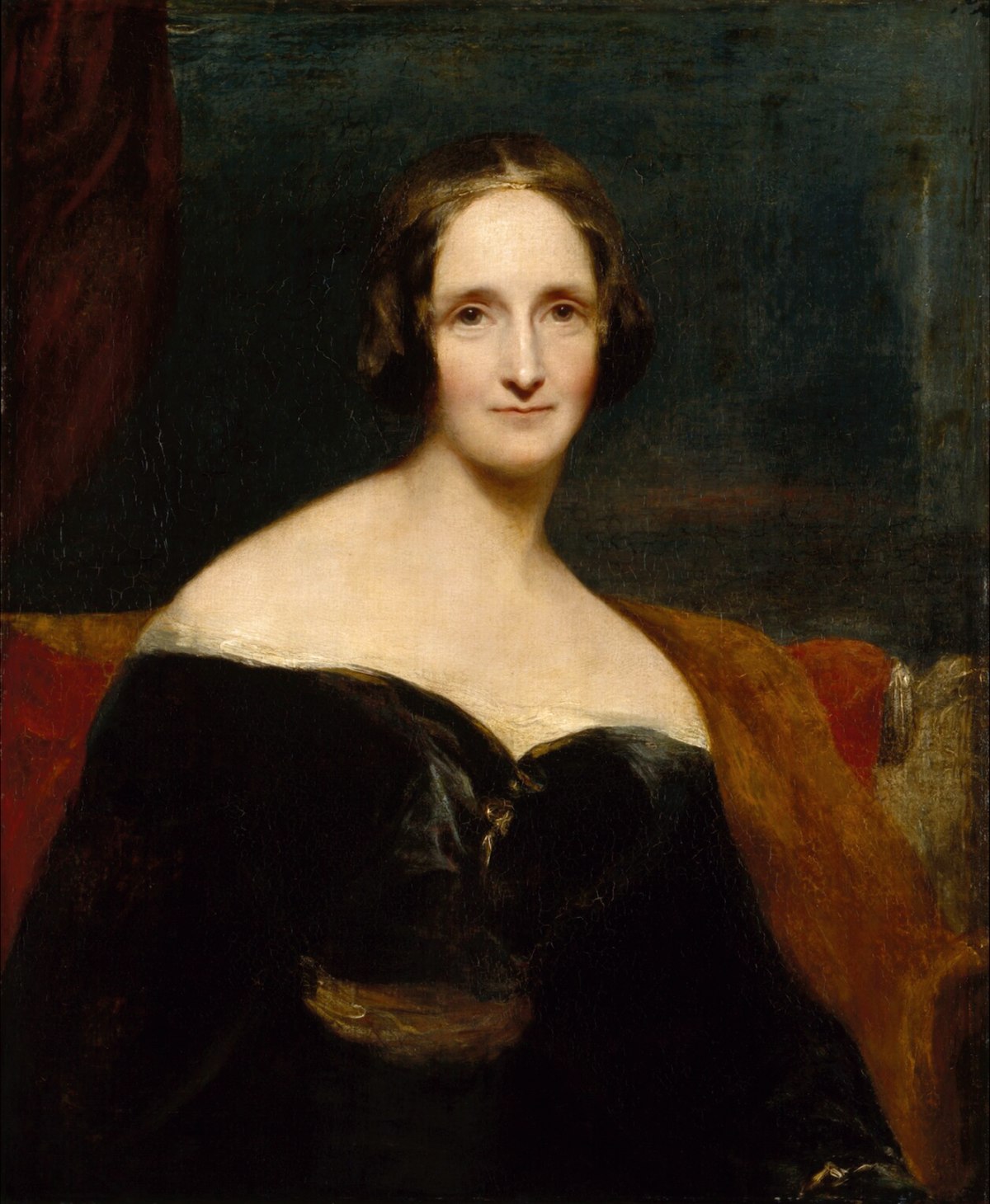
What makes Frankenstein such a compelling Gothic Romance is that it explores the scientific unknown and the philosophical unknown. Shelley uses galvanization, which is reanimation through electricity, as a plot device to entertain the question of what man would be like if he was brought back from the dead. Victor’s flaw is that he pushes too far and tries to answer that unknown; he crosses an ethical and metaphorical line that should not have been crossed when he decided to reanimate the corpses he collected. The novel compares Victor’s thought process when creating his creature — something he did during a period of extreme grief following the death of his mother — to that of God’s. In this, readers see the self-destructive nature of man and his “disturbed imagination,” as Ruskin would call it. Victor’s descent into madness and hubris as he collects the perfect body parts for his creature, and the horror with which he recalls his actions at university, described with high emotional intensity, makes for a page-turning read.
The fascination with reanimation and the dead in the text neatly fits the Gothic Romance’s dwellings on the macabre and grotesque. The mere appearance of the creature, too, is also remarkably grotesque and is intended to instill horror in the reader’s mind. The way Victor describes the creature when it has awoken is full of horror at the grotesqueness of his features:
“I started from my sleep with horror; a cold dew covered my forehead, my teeth chattered, and every limb became convulsed; when, by the dim and yellow light of the moon, as it forced its way through the window shutters, I beheld the wretch—the miserable monster whom I had created. He held up the curtain of the bed; and his eyes, if eyes they may be called, were fixed on me. His jaws opened, and he muttered some inarticulate sounds while a grin wrinkled his cheeks. He might have spoken, but I did not hear; one hand was stretched out, seemingly to detain me, but I escaped and rushed downstairs. […] Oh! No mortal could support the horror of that countenance. A mummy again endued with animation could not be so hideous as that wretch. I had gazed on him while unfinished; he was ugly then, but when those muscles and joints were rendered capable of motion, it became a thing such as even Dante could not have conceived.”
(( Shelley, Mary. Frankenstein, edited by Johanna M. Smith. (Boston: Bedford / St. Martin’s) p. 61. ))
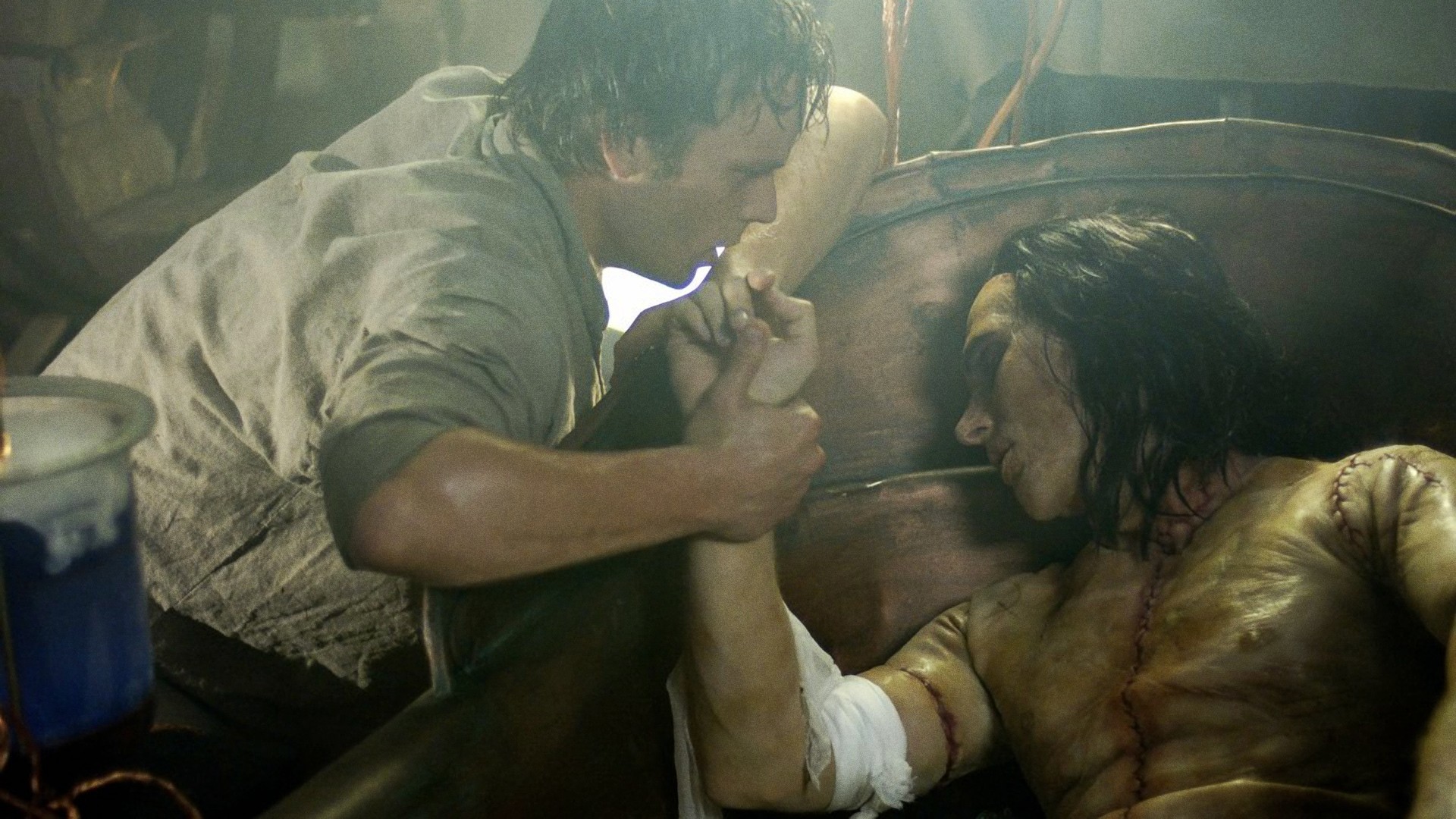
Victor’s emotional turmoil and guilt following the reanimation of his creature, especially as the creature stalks him throughout Europe and vows to kill everyone he loves, also captures the essence of the Gothic Romance genre. The narrative is entirely focused on him as an individual, his psychological distress, and his guilt over playing God. His obsession, too, that drove him to make his creature in the first place, is indicative of how Gothic Romances favor the individual and their emotional experiences. The audience is meant to pity Victor by bearing witness to his emotional and psychological distress.
Shelley’s exploration of Victor’s interiority emphasized by the frame story in which Walton, a explorer trying to see the North Pole, comes across Victor stranded in a boat of his own, who tells him the story of his own obsession in a first-person narrative to deter him from seeking the unknown. Frankenstein establishes popular conventions of the Gothic Romance by maintaining a first-person narrative that centralizes and details the interiority of the main character Victor Frankenstein. Shelley emphasizes the grotesque, the macabre, and the unknown by making Victor so fascinated with the reanimation of the dead through galvanization — all of which lend to serious ruminations on the self-destructive nature of man, the dangers of trying to discover what is in the unknown, and the horror of reanimated dead.
Crimson Peak (2015): A Contemporary Gothic Romance
Guillermo del Toro’s film Crimson Peak explicitly works with several tropes commonly found in the genre. The film was made explicitly to evoke the stories of classic Gothic Romances like Wuthering Heights and Jane Eyre, according to del Toro. With Tom Hiddleston as Sir Thomas Sharpe, the leading man, the film finds its Gothic Byronic hero. In Allerdale Hall, also known as Crimson Peak, the film gets its haunted, mysterious house that contains generations of family secrets and is the visible symbol of the decay of the Sharpe family. The ghosts that haunt and follow leading woman Edith Cushing-Sharpe throughout her life invoke the supernatural tropes common in Gothic Romances. Crimson Peak is a fascinating look at and addition to the Gothic Romance genre.
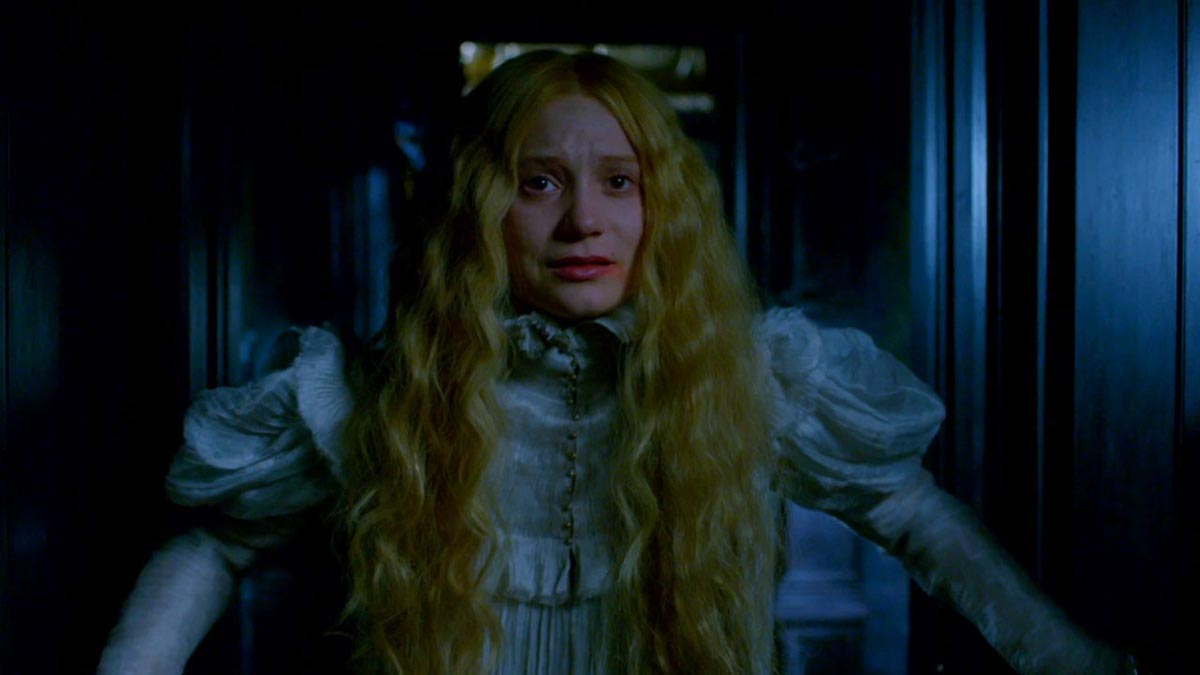
In Crimson Peak, leading lady Edith has been plagued her whole life by ghosts and the past, especially the ghost of her mother, who warns her to beware Crimson Peak. Since her mother’s death, and subsequently being visited by her ghosts, Edith has been fascinated by ghosts, even writing them into her novel. At Crimson Peak, ghosts begin making themselves known to Edith and warning her of the Sharpe siblings’ schemes. The ghosts are manifestations of the past, warnings that the past is full of trauma and darkness. The ghost of Mrs. Cushing is all black and dressed in traditional Victorian mourning clothes, surrounded by flies; the ghosts at Crimson Peak are red and dripping with blood — or perhaps the red ore clay that the house stands on. All of the ghosts are skeletal and grotesque, much like how the creature in Frankenstein is supposed to be, and their appearances are meant to create shock and horror. Even Thomas becomes a ghost at the end of the film, his cheek “bleeding” from being stabbed.
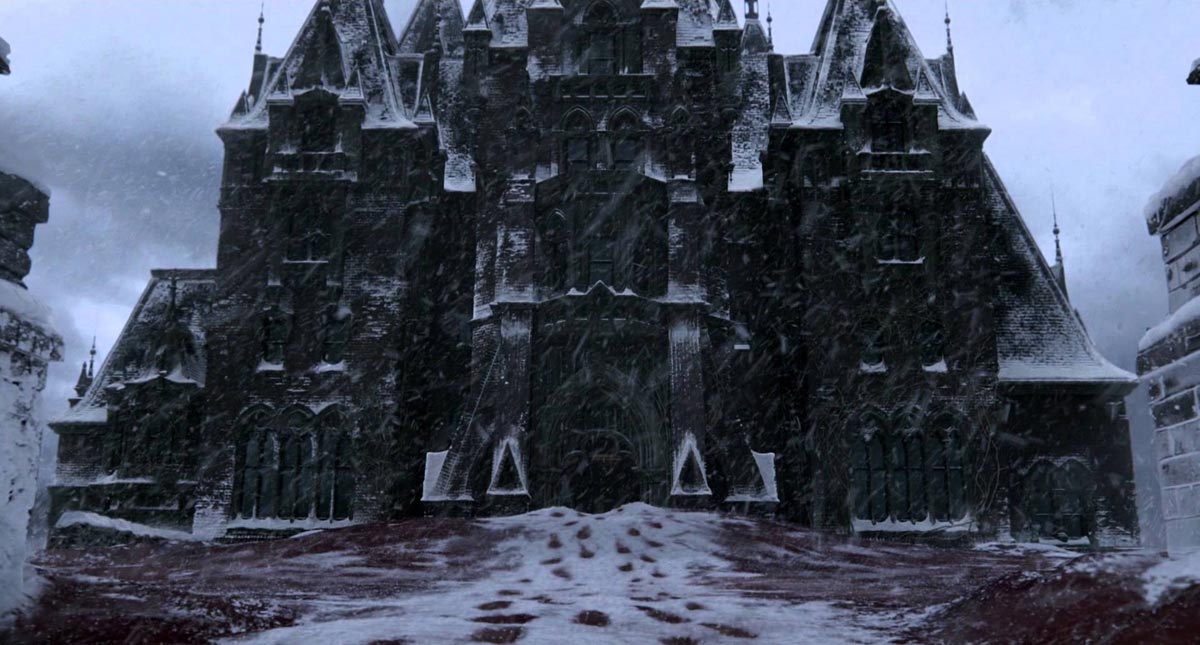
Crimson Peak itself, as aforementioned, also holds generations of family secrets and generational trauma — the red ore clay bleeds through the floorboards, implying that when pushed too hard, the family secrets will come bleeding out of the house. The roof is broken and all sorts of debris get in through the draft. Flies and black moths, many of which are dead, cover the surfaces. Some of the secrets hidden in the house include the incestuous relationship between Thomas and his sister Lucille, which had been going on for years and had led to the birth of a sickly, long-dead child; the murder of Mrs. Sharpe, Thomas and Lucille’s mother, when she had discovered their incestuous relationship; and the marry-and-murder scheme Thomas had done with three women to support his mining operations and his sister. Lucille even makes a passing comment to Edith when she first moves in that “[a]ll that lives in this house is shadows and creaks and groans.” The estate takes on a life and character of its own, its contents holding and revealing more of the Sharpe family secrets as Edith explores its many rooms and floors.
Sir Thomas Sharpe is an exemplary Byronic hero. When he is introduced to the narrative, Edith is still in America — the idea of an English baronet coming to visit the social scene is intriguing and mysterious in every way. His mysterious past makes him alluring to Edith, especially as he becomes passionately in love with her in defiance of her father’s wishes. He is also sensitive and intelligent, two other things that draw Edith towards him. He also fulfills the heroic journey of the Byronic hero, which is to fall in love with and woo a woman — in his case, Edith Cushing. Though their courtship begins as one of convenience since Thomas plans to take her inheritance and kill her, it becomes apparent that he no longer wants to do this because he is in love with her. It is as if Edith, who is of pure heart and intention, changes his cold, brooding, and immoral heart through her love for him.
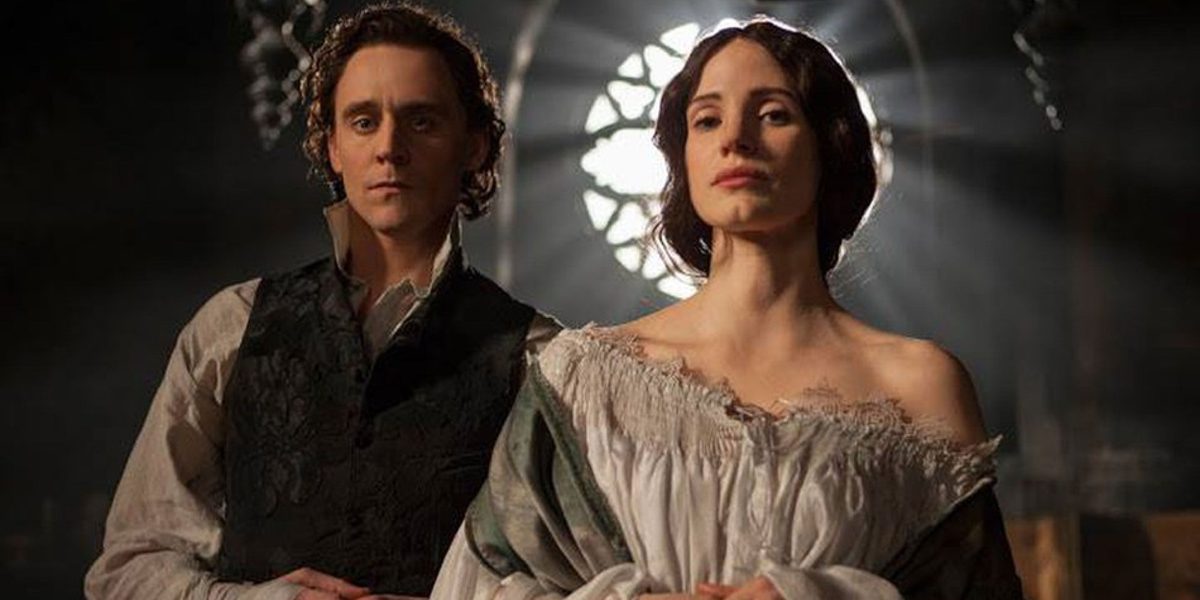
One aspect of Crimson Peak I found particularly evocative of the Romantic aspect of the genre was how industrialism, and the need for money, weakens man and poisons society. The more Gothic aspect of the film explores the darkness of the human mind when they are financially desperate and explains why the Sharpe siblings commit immoral and murderous acts. Thomas and Lucille’s marry-and-murder scheme explicitly targets wealthy, single women who can fund the mining operations at Crimson Peak and Thomas’ inventions. The weakened political and economic influence of the aristocracy at large in 1880s England, as well as Lord Sharpe’s loss of the family fortune by way of travel, created this need for money and industrialism (the mining) as the response. The Sharpe siblings, in their desperation, then turned to their murder-and-marry scheme to secure that money.
Crimson Peak takes many conventions of the Gothic Romance genre, such as the supernatural, the ominous home, and the Byronic hero. It breathes new life into them through the medium of film. Though the film is first and foremost a horror movie, the horror aspect emphasizes the Gothic Romance genre’s fascination with the grotesque, the sublime, and the unknown through its visually striking ghosts and grisly murders. It is a wonderful addition to the genre that pushes the boundaries of typical period pieces by making it a horror film and visualizing the emotional and visual aesthetic of Gothic Romance.
Why Is It Appealing?
Part of the reason why Gothic Romances were so popular in their heyday, and why they have remained classics to this day, is because of their unashamed interest in the unknown, the darkness, and the individual. They ask difficult questions about life, mortality, and obligations in the face of personal desire and romance. These stories push characters to emotional extremes and show them at their worst. In that regard, they function like Shakespearean tragedies. They are so appealing because the characters are not afraid to show emotion in the midst of a heartless world, and readers are invited to empathize with their pain in a very human way.
Whether they be in novel or film, Gothic Romances are still appealing to readers and movie-goers today because of how they explore the unknown through the supernatural and the sublime. They feature obsessed and passionate leading males that are burdened by their choices and are in touch with their emotions, foreboding homes haunted by ghosts and the tragedies of the past, and ruminations on life and death — all of which are stimulating to the senses and keep the audience hooked on the story. From Mary Shelley’s Frankenstein to Guillermo del Toro’s Crimson Peak, the Gothic Romance genre is sure to captivate audiences looking for a story that isn’t afraid to explore the darker side of human nature, the weight of love, and the terrifying realm of the unknown.
